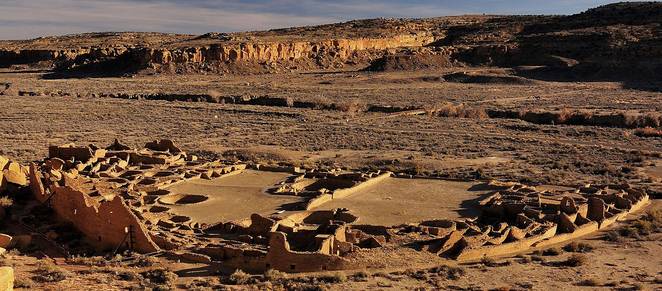

Many of the world’s bright and innovative thinkers are spending their days trying to come up with solutions to climate change. Researchers and engineers are looking for ways to slow it as well as how to respond to the challenges that will come with it like drought, crop shortages, loss of coastline, population changes and more.
What we fail to remember sometimes though is that human beings have dealt with climate change before. Ancient civilizations had to cope with extreme weather, drought and other environmental challenges. What can we learn from the way they lived to help us in the future?
Researchers at Washington State University have built computer models to allow us to look at how ancient humans responded to climate change — where they were successful and where they failed.
“For every environmental calamity you can think of, there was very likely some society in human history that had to deal with it,” said Tim Kohler, emeritus professor of anthropology at WSU. “Computational modeling gives us an unprecedented ability to identify what worked for these people and what didn’t.”
Kohler has built computer simulations called agent-based models that take virtual ancient societies, puts them in geographically accurate landscapes and generates how they likely responded to changes in things like precipitation, resource depletion and population size. Comparing his models and archaeological evidence lets researchers see what conditions led to growth or decline for these peoples.
“Agent-based modeling is like a video game in the sense that you program certain parameters and rules into your simulation and then let your virtual agents play things out to the logical conclusion,” said Stefani Crabtree, who recently completed her Ph.D. in anthropology at WSU. “It enables us to not only predict the effectiveness of growing different crops and other adaptations but also how human societies can evolve and impact their environment.”
One of the notable things the computer models can do is show what plants grew well in certain conditions in the past and where they could be useful today. Little known or forgotten crops that provided sustenance for people living long ago could serve as an important food sources for people living in changing climates now. For example, drought-resistant Hopi corn could grow well in Ethiopia where the Ethiopian banana has suffered due to extreme heat and pests.
There models have also shown that in Tibet where warming temperatures have affected people’s ability to grow staple cold weather crops and raise yaks, two types of millet could thrive there. Foxtail and proso millet used to be cultivated on the Tibetan plateau 4,000 years ago when it was warmer, but as the climate got colder, they were abandoned for colder weather crops. Those crops could make a comeback today because they are heat resistant and require little rainfall.
The researchers say that this is just the beginning of the potential of this type of modeling. As more anthropological data is brought into these models, more clues and solutions can be found to help humans cope with the challenges of climate change.
[Source:-Trrhuger]
